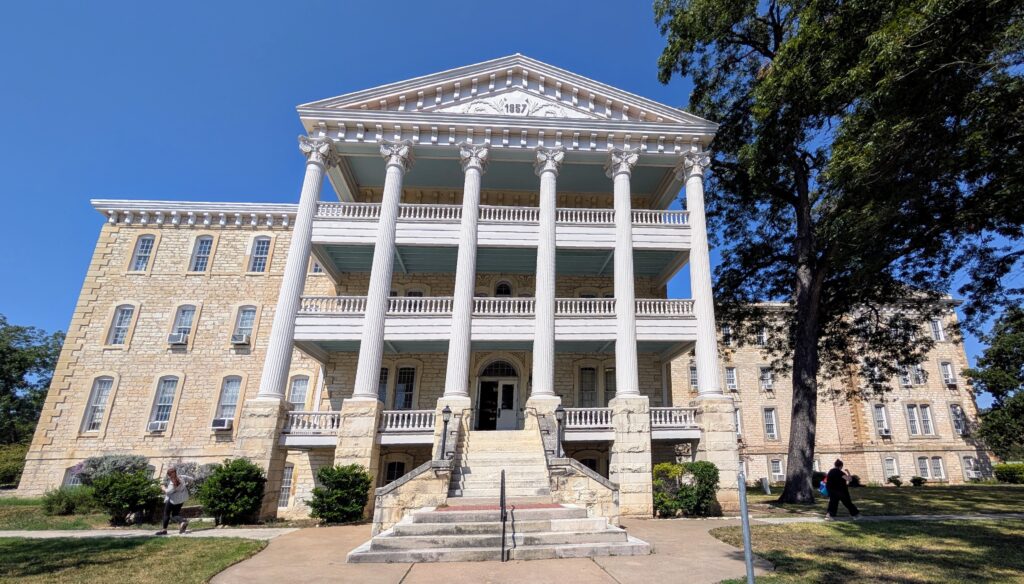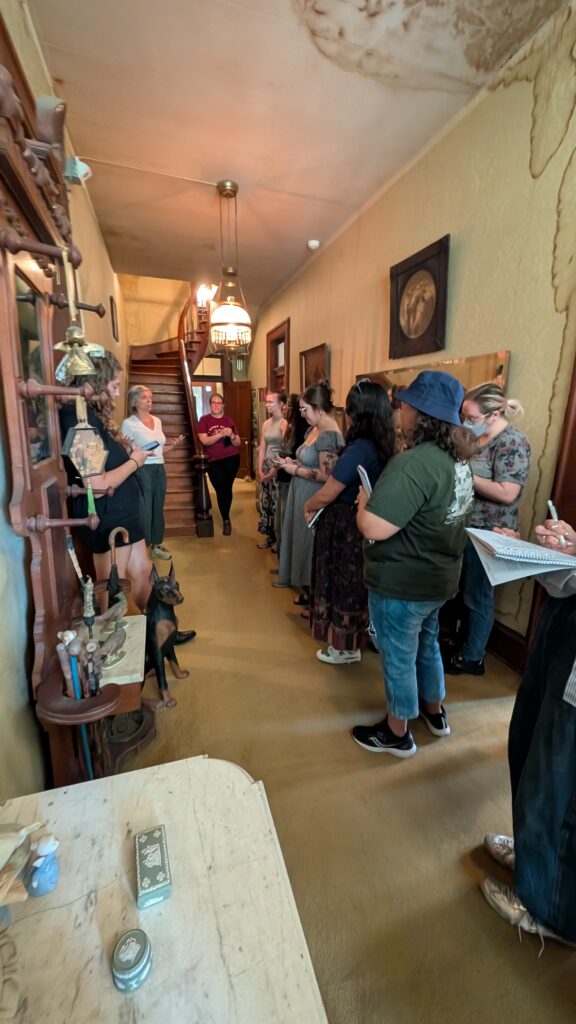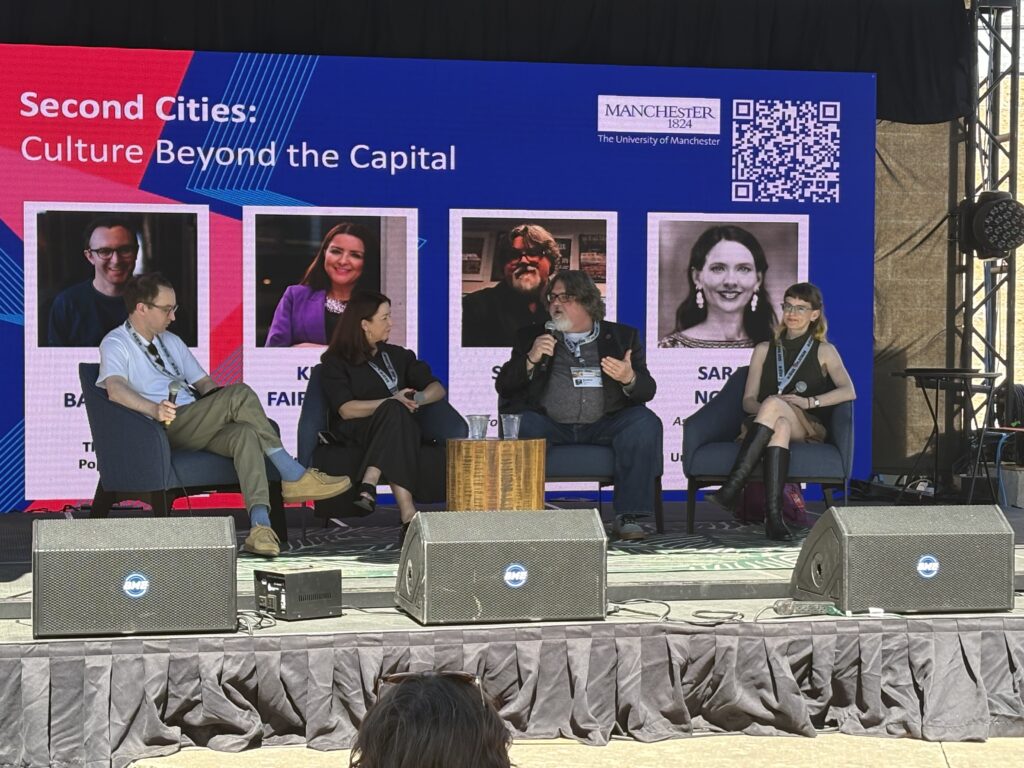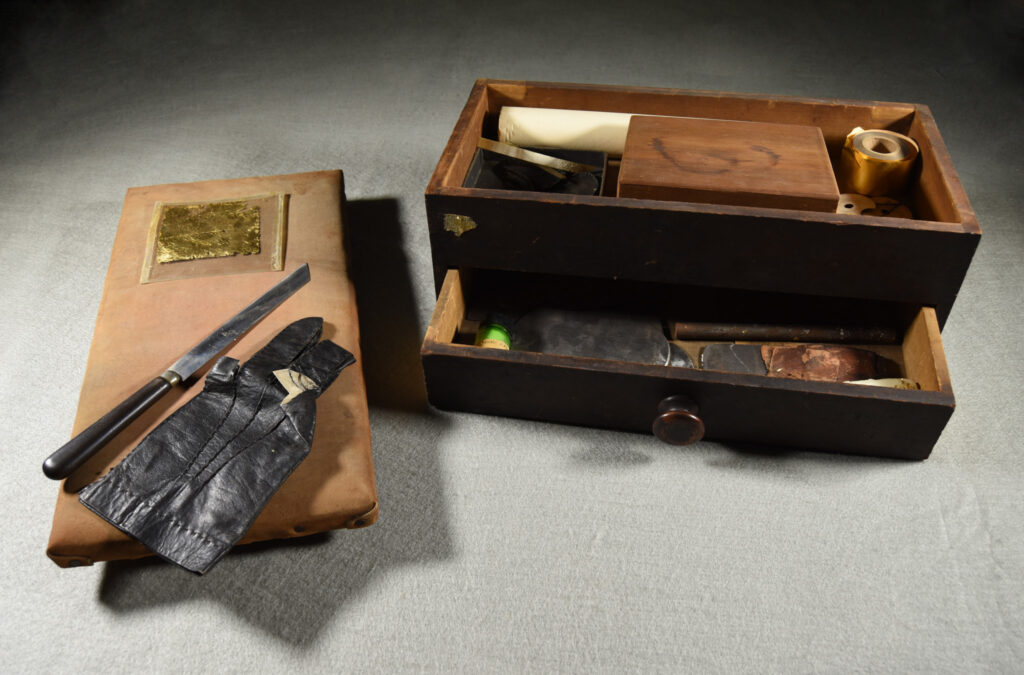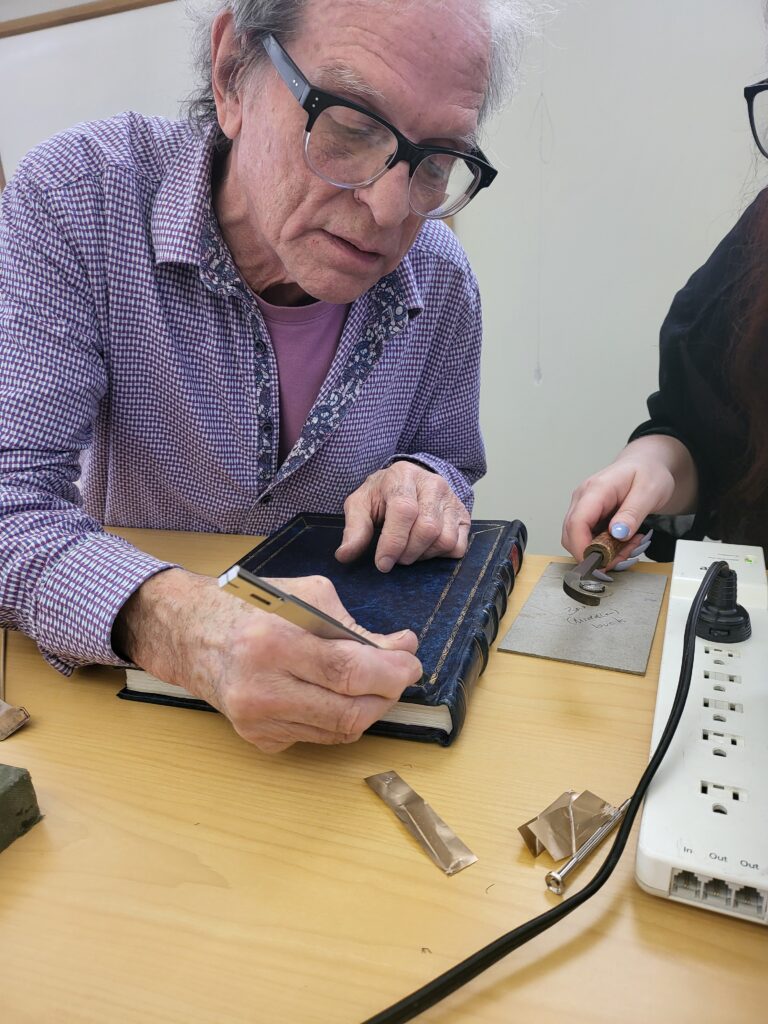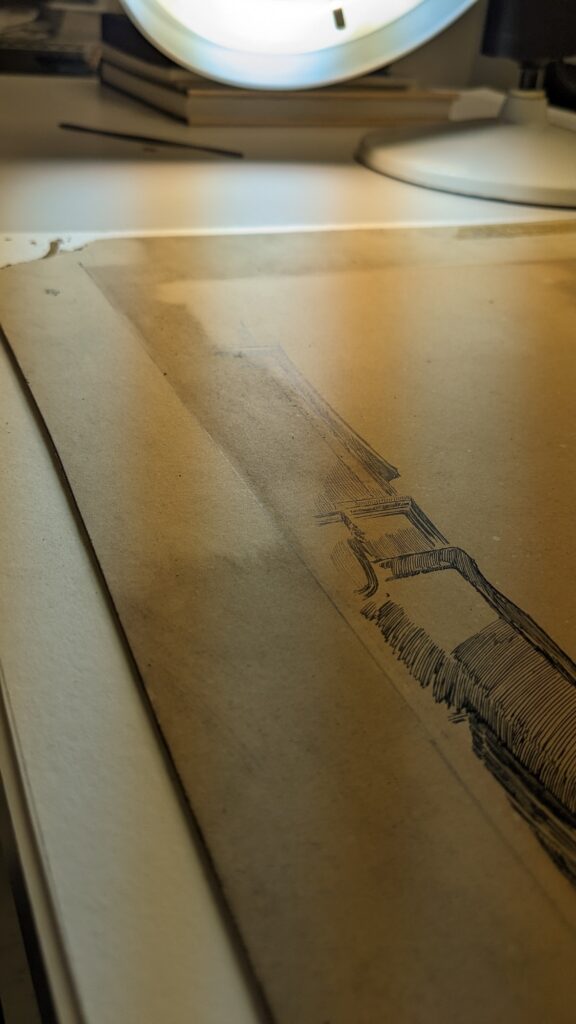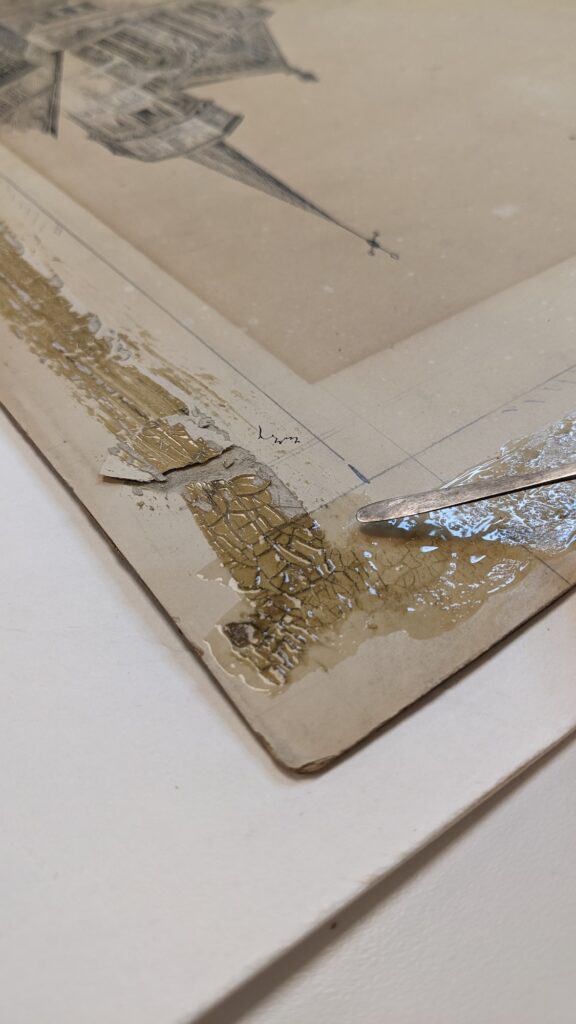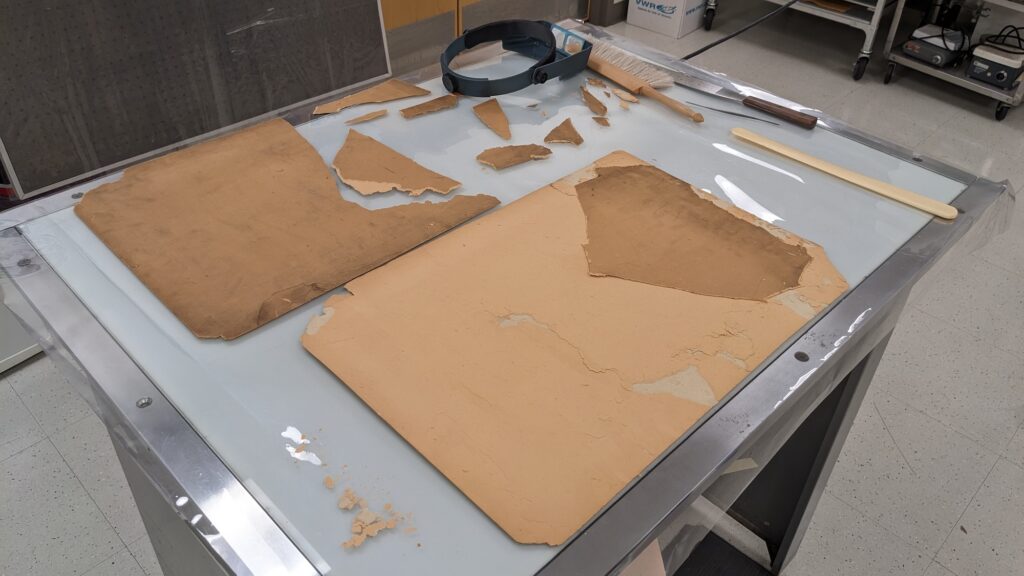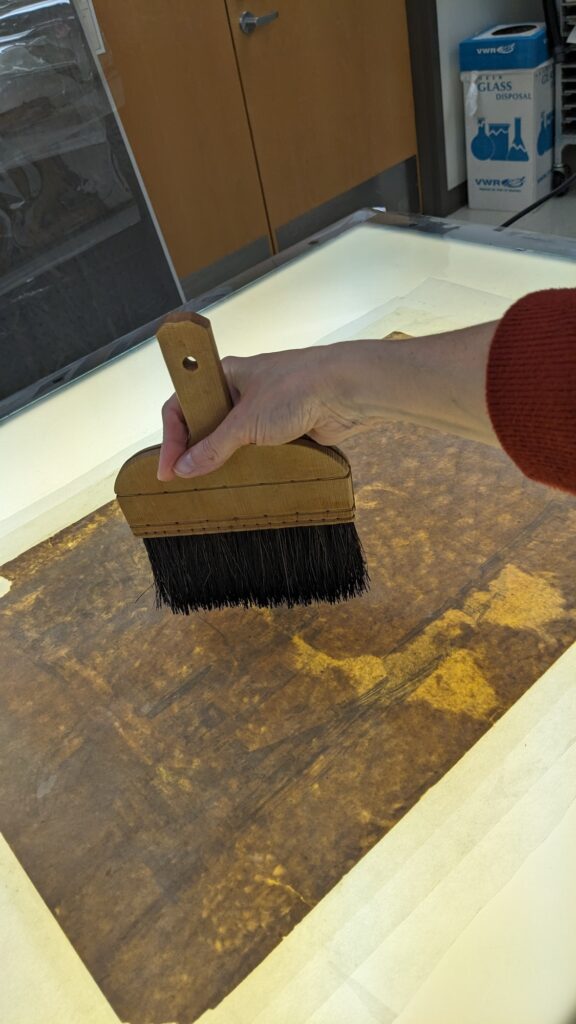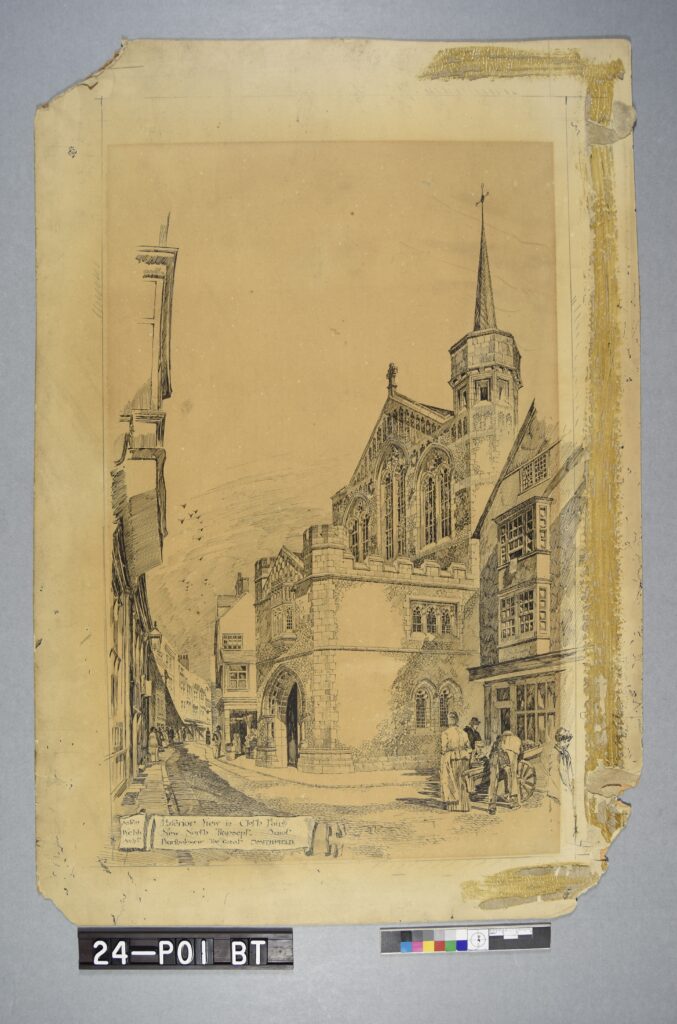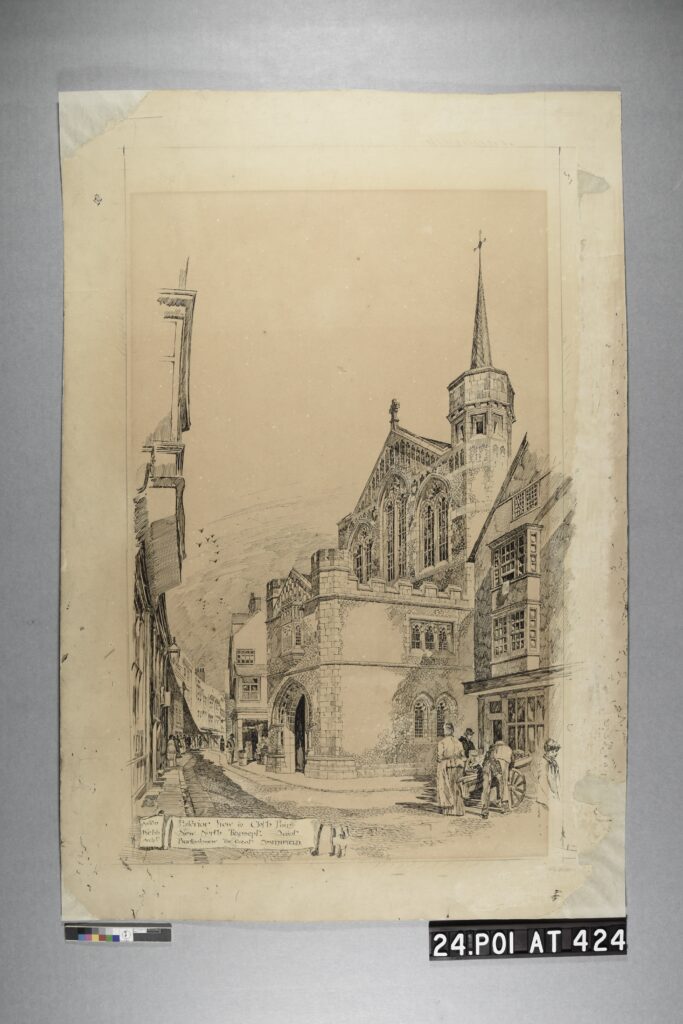On November 8, School of Information and Austin Community College students undertook a discussion that can stand as a model for challenging times. Over four hours of structured dialogue, students considered the devastating flood in the Texas Hill Country in the summer of 2025. Students worked in small groups to discuss disaster warning systems, risk data mapping protocols, and transparency in community decision-making. After extensive preparation in Dr. Brian McInnis’ course, Civic Engagement and Technology, students collaborated in seeking proactive solutions to better prepare communities to anticipate and respond to life-threatening flood events.
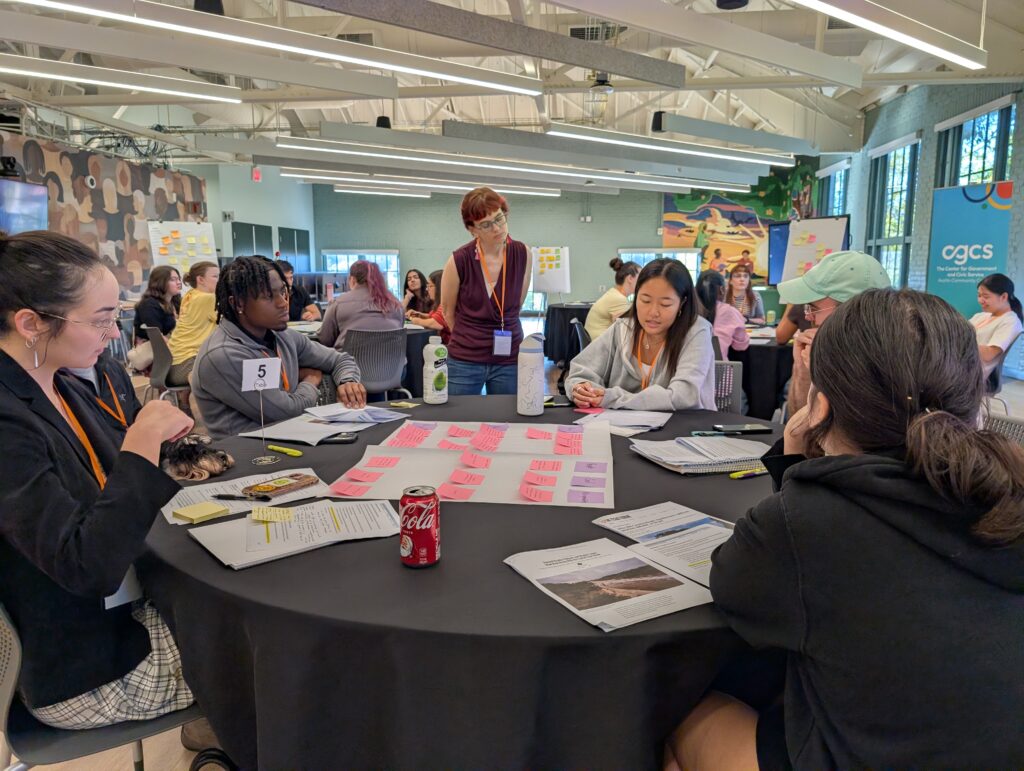
Professor Sarah Norris (that’s me!) looks on while students evaluate news coverage of the Summer 2025 Texas Hill Country floods.
I was so excited to sit in on this exercise to represent perspectives in cultural heritage disaster preparedness. Joining me were three students from my Disaster Planning and Response course, Sydney Leibfritz, Kylie Burnham, and Hannah Smith, who helped us consider how human safety and cultural heritage preservation can go hand in hand. Juliana Martinez also represented our class by compiling resources on community assistance organizations. It was inspiring to see our students engage in such broad-ranging, interdisciplinary discussion. Their deliberative practice offers an example of how constructive human engagement can move our communities toward brighter futures.
Big thanks to Dr. Brian McInnis for connecting our respective fields of study in this inspiring exercise. I look forward to future engagement in the growing domain of disaster preparedness.




